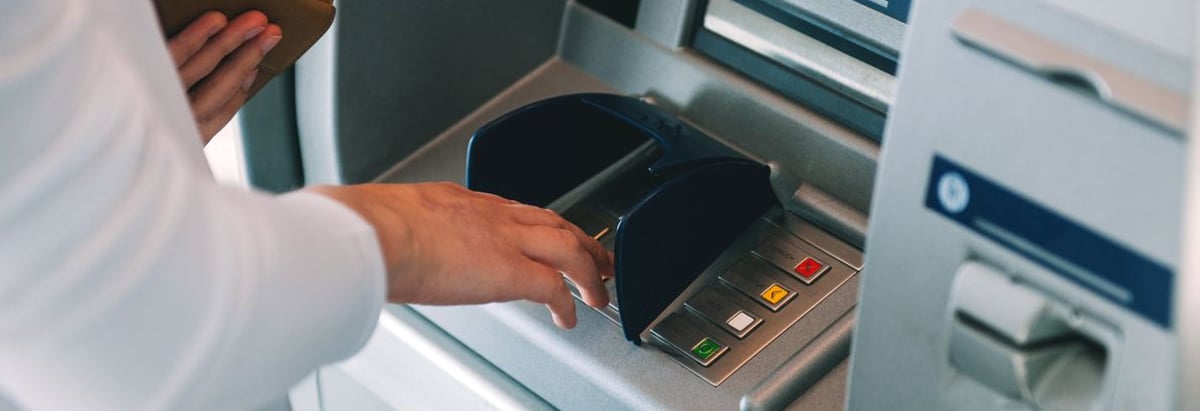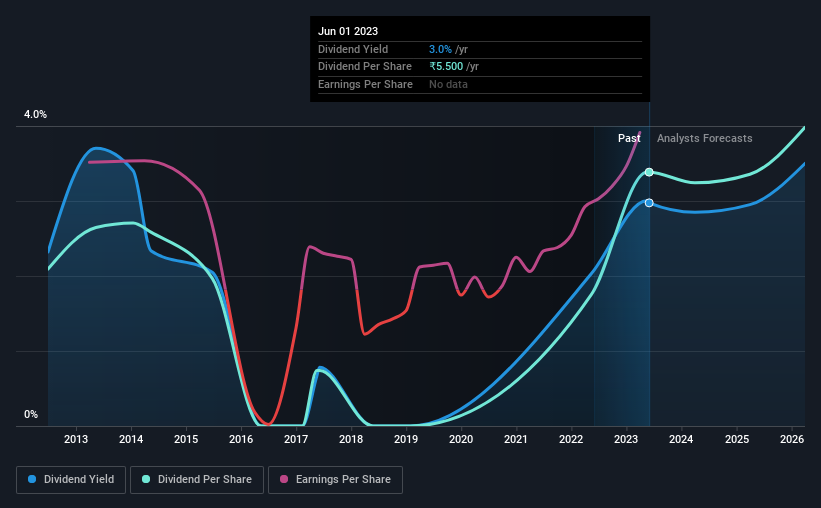Bank of Baroda (NSE:BANKBARODA) Is Increasing Its Dividend To ₹5.50

Bank of Baroda (NSE:BANKBARODA) will increase its dividend from last year's comparable payment on the 6th of August to ₹5.50. This makes the dividend yield 3.0%, which is above the industry average.
Check out our latest analysis for Bank of Baroda
Bank of Baroda's Payment Expected To Have Solid Earnings Coverage
A big dividend yield for a few years doesn't mean much if it can't be sustained.
Bank of Baroda has a long history of paying out dividends, with its current track record at a minimum of 10 years. While past records don't necessarily translate into future results, the company's payout ratio of 19% also shows that Bank of Baroda is able to comfortably pay dividends.
The next 3 years are set to see EPS grow by 25.9%. The future payout ratio could be 18% over that time period, according to analyst estimates, which is a good look for the future of the dividend.

Dividend Volatility
Although the company has a long dividend history, it has been cut at least once in the last 10 years. The dividend has gone from an annual total of ₹3.40 in 2013 to the most recent total annual payment of ₹5.50. This works out to be a compound annual growth rate (CAGR) of approximately 4.9% a year over that time. The dividend has seen some fluctuations in the past, so even though the dividend was raised this year, we should remember that it has been cut in the past.
The Dividend Looks Likely To Grow
Given that the dividend has been cut in the past, we need to check if earnings are growing and if that might lead to stronger dividends in the future. Bank of Baroda has seen EPS rising for the last five years, at 68% per annum. A low payout ratio gives the company a lot of flexibility, and growing earnings also make it very easy for it to grow the dividend.
Bank of Baroda Looks Like A Great Dividend Stock
Overall, we think this could be an attractive income stock, and it is only getting better by paying a higher dividend this year. The company is easily earning enough to cover its dividend payments and it is great to see that these earnings are being translated into cash flow. All in all, this checks a lot of the boxes we look for when choosing an income stock.
Investors generally tend to favour companies with a consistent, stable dividend policy as opposed to those operating an irregular one. Meanwhile, despite the importance of dividend payments, they are not the only factors our readers should know when assessing a company. To that end, Bank of Baroda has 2 warning signs (and 1 which can't be ignored) we think you should know about. Is Bank of Baroda not quite the opportunity you were looking for? Why not check out our selection of top dividend stocks.
Valuation is complex, but we're here to simplify it.
Discover if Bank of Baroda might be undervalued or overvalued with our detailed analysis, featuring fair value estimates, potential risks, dividends, insider trades, and its financial condition.
Access Free AnalysisHave feedback on this article? Concerned about the content? Get in touch with us directly. Alternatively, email editorial-team (at) simplywallst.com.
This article by Simply Wall St is general in nature. We provide commentary based on historical data and analyst forecasts only using an unbiased methodology and our articles are not intended to be financial advice. It does not constitute a recommendation to buy or sell any stock, and does not take account of your objectives, or your financial situation. We aim to bring you long-term focused analysis driven by fundamental data. Note that our analysis may not factor in the latest price-sensitive company announcements or qualitative material. Simply Wall St has no position in any stocks mentioned.
About NSEI:BANKBARODA
Bank of Baroda
Provides various banking products and services to individuals, government departments, and corporate customers in India and internationally.
Undervalued established dividend payer.
Similar Companies
Market Insights
Community Narratives



